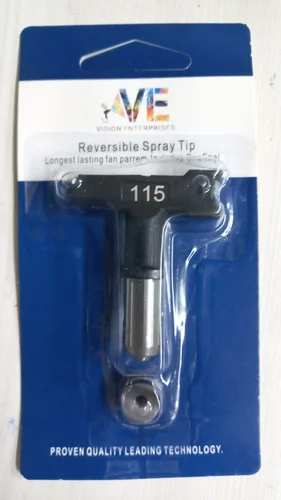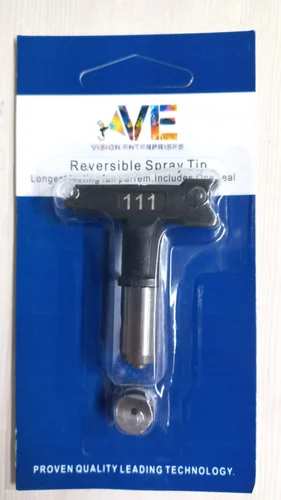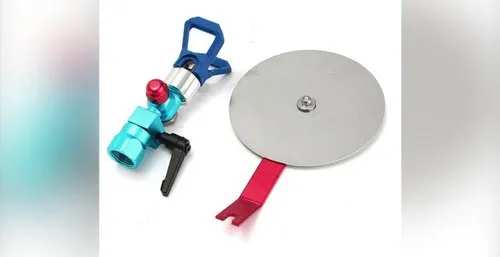Automation Grade: Automatic Brand: Vision Handle Material: SS Model Name/Number: VE TIP 115 Product Type: Reversible Usage/Application: Airless Painting Airless paint sprayer tips are the unsung heroes of the finishing world, transforming liquid paint into a fine, even mist for efficient application. Choosing the right tip is crucial for achieving a flawless finish and optimizing paint usage. Here's a comprehensive guide to help you navigate the world of airless sprayer tips: Tip Sizes: Tip numbers: Represented by a three-digit code, where the first digit indicates the spray pattern (round, fan, etc.), the second digit indicates the orifice diameter in tenths of a millimeter, and the third digit (optional) denotes additional features like a reverse-clean mechanism. Orifice diameter: The key factor determining paint flow rate and fan width. Smaller tips (e.g., 211, 311) deliver less paint and create narrower patterns, ideal for λεπτά υλικά like stains, varnishes, and lacquers. Larger tips (e.g., 517, 623) handle thicker paints like latex and primers, producing wider patterns for faster coverage. Tip Patterns: Round: The most common pattern, producing a circular spray ideal for precision work like trim and doors. Fan: Offers wider coverage for walls and large surfaces, available in various angles (e.g., 45°, 55°) for different fan widths. Wall Texture: Designed for applying textured coatings, creates a stippled pattern for decorative finishes. Additional Features: Reverse-clean tips: Allow for easy cleaning by unscrewing and rinsing the tip, preventing clogs and paint buildup. Stainless steel tips: More durable and wear-resistant, ideal for heavy-duty use and abrasive paints. Tip guards: Protect the tip from accidental damage and overspray.



